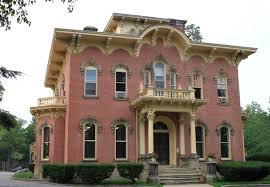
The idea of the rehabilitation is to make available a tax credit from the federal government to help renovate and rehabilitate historic buildings that generate income. According to this tax reform, there is a Federal tax credit of 20% available for rehabilitation of buildings certified as historic. Examples of such buildings are industrial, commercial, rental residential building, commercial buildings, etc.
The credit helps take care of taxes that the owner owes. There is an additional state tax credit (25%) that owners can enjoy. This makes the total available credit 45% of the entire rehabilitation cost.
Qualification Criteria:
There are some checklists that the project must meet to be eligible for the RITC (rehabilitation investment tax credit). Here are the requirements:
The property or building must be certified historically. This means that the building should be listed in the National Register of Historic Places. Even If it is not listed, it should qualify for individual listing. In another way, the building must be part of the historic district present in the National Register of Historic Places
The structure must be subject to depreciation and should generate income. Examples are industrial, agriculture, commercial, rental residential, etc.,
The rehabilitation of the building must obey the Secretary of the Interior's Standards for Rehabilitation and Guidelines for Rehabilitating Historic Buildings. There will also be a body to check if the renovation meets the standard needed.
The substantial rehabilitation test must be passed. For the rehabilitation project to pass the test, the building owner must either spend above five thousand dollar or a cost that is more than the building’s adjusted basis. The project’s adjusted basis does not include the land cost on the commencement of the project.
Procedure for Application:
To get this Tax Credit for Rehabilitation, there should be an application with the (SHPO) State Historic Preservation Office. Filing of the application needs to precede construction although, there is a provision to submit application throughout the construction period. The disadvantage, however, is that there is a high rate of violating building standards which might disqualify the building owner.
The owner needs to know if the rehabilitation proposed will satisfy the test for substantial rehabilitation. A rough calculation, most times, will help with this.
The owner must also determine if the building meets the test for a certified historic building. This info is available with the State Historic Preservation Officer. (SHPO)
The application form and instruction are available with the SHPO. Many times, a staff from the SHPO might have to visit the site.
On completing the form, submit it to the State Historic Preservation Officer. They will review it and submit it to the (NPS) National Park Service. You will have to submit double copies of all parts of the application. Also, supporting documents like maps, plans specifications, and photographs should accomplish the application
On completing the project, the owner will have to file with the agency -SHPO. He needs to certify the completed work by getting the Historic Preservation Certification Application Request for Certification.
When the NPS approves the application, there will be written notification. It is essential to file this with Uncle Sam alongside your tax return.
Essential Notes
Building owner and lessee (long term) can enjoy the Rehabilitation Tax Credit (RTC)
If the owner will claim the credit, he must maintain the property’s ownership for at least five years. Any breach of this might cause the credit to be recaptured
The adjustment-to-basis rule affects the RTC
There is a 24 months’ period for the (SRET) substantial rehabilitation expenditure test to be satisfied. In cases, however, when the owner reveals that the project will be in phases, the period can be extended to five years.
The costs allowed to be included in the (RTC) rehabilitation tax credit are costs that have to deal with capital accounts like electrical work, plumbing, mechanical systems, and others.
Only the (SHPO) State Historic Preservation Officer and (NPS) National Park Service is charged with approving the rehabilitation project. While other commissions and bodies like Historic Landmarks Commissions, Preservation Consultants, Main street Organizations, etc. might provide advice, they cannot approve the credit.
FOR MORE INFORMATION ON Unifirst Financial & Tax Consultants OR TO MAKE AN APPOINTMENT WITH US, PLEASE CLICK ON THE BLUE TAB ON THIS PAGE.
THANKS FOR VISITING.
